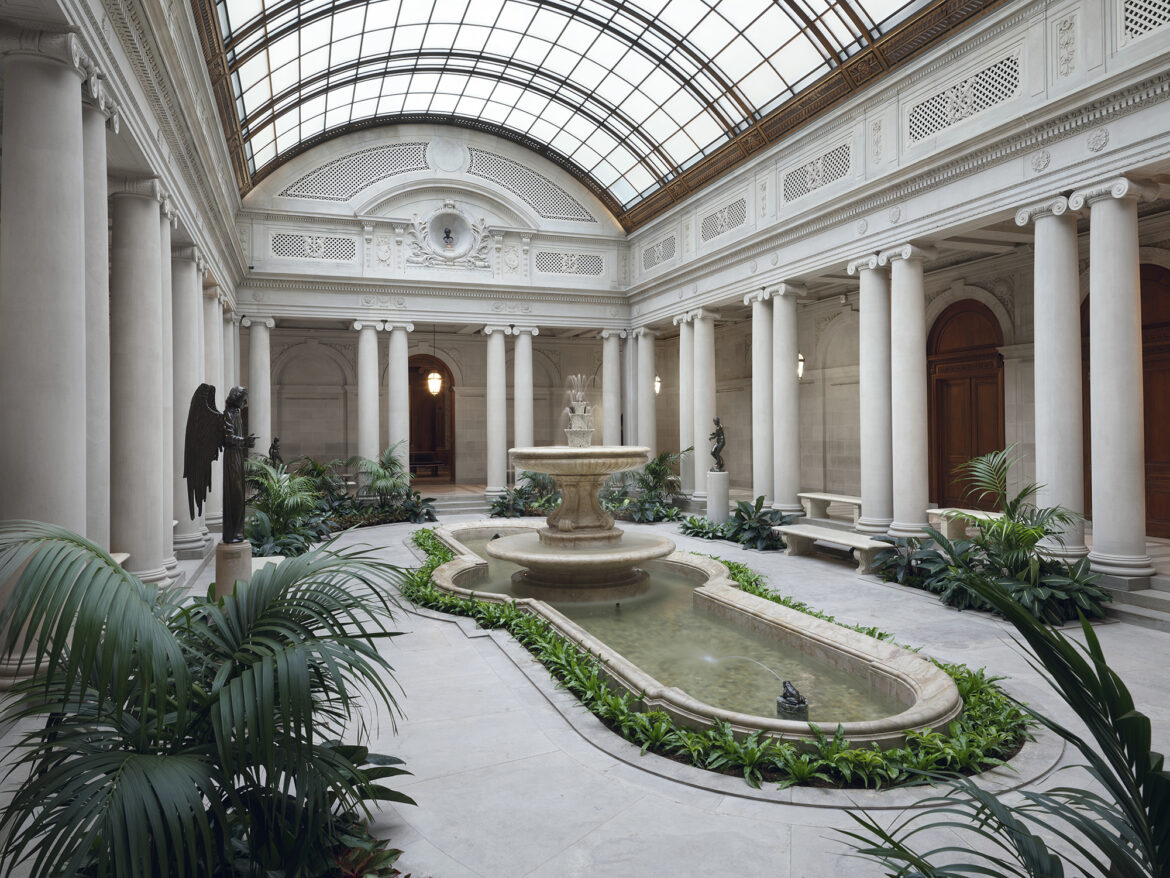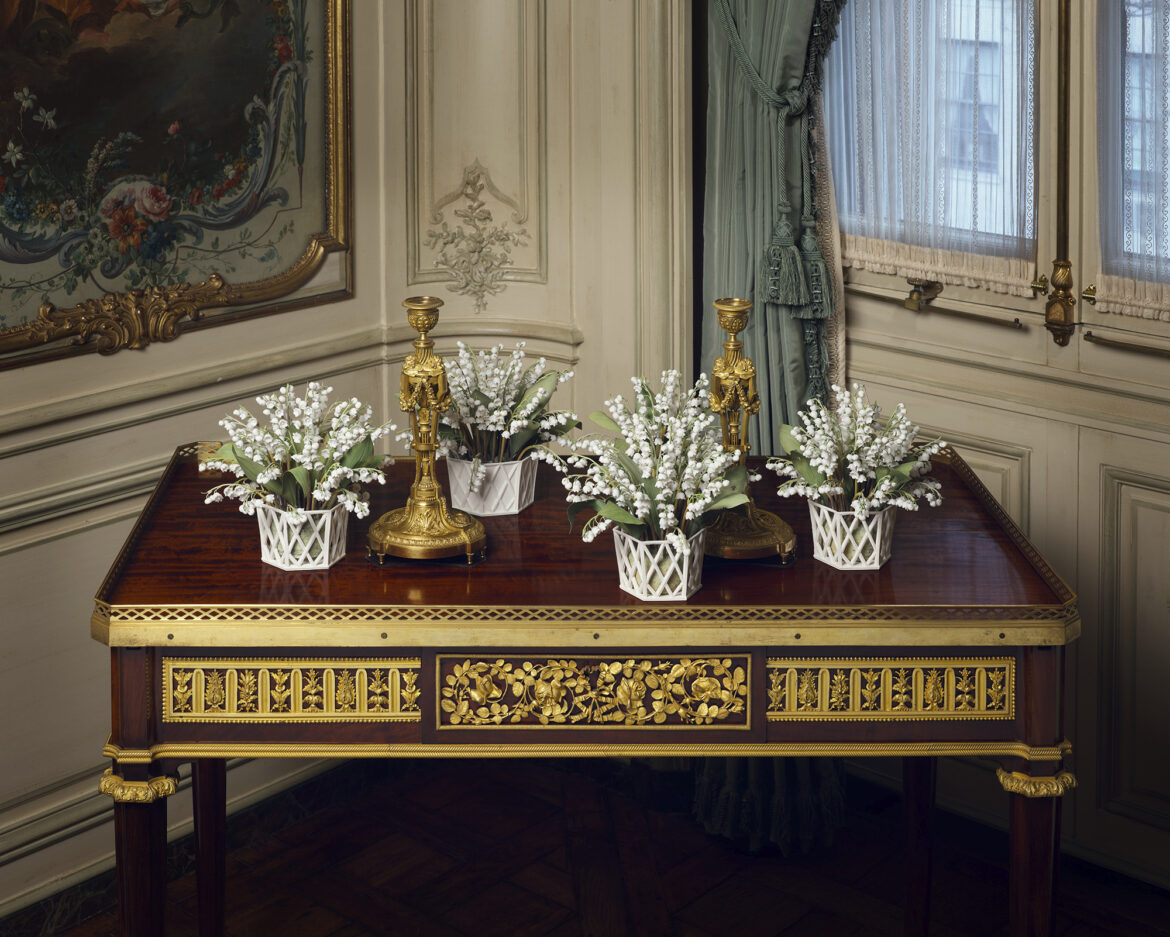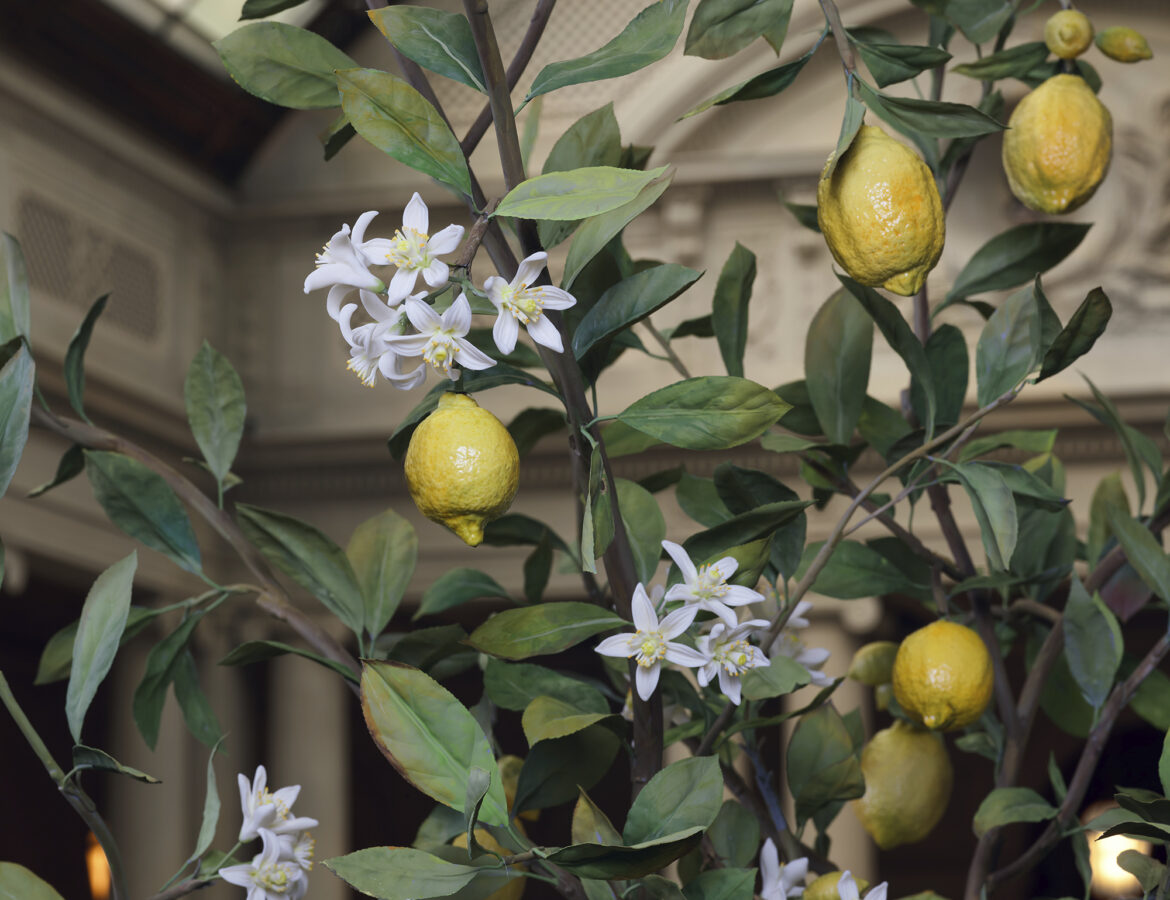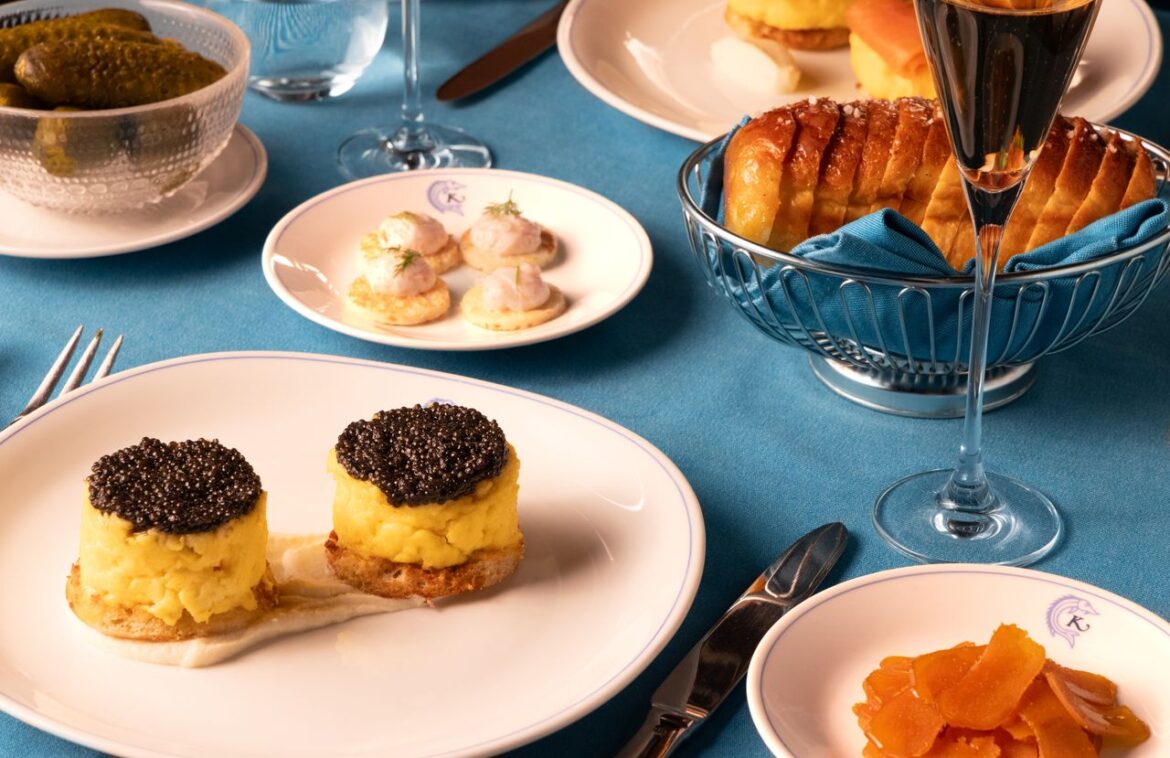Now that Season Three of The Gilded Age has come to a close, many of us are left wondering how to fill the void.
Between divorced woman having their diva moments, Peggy’s tearjerking engagement, Gladys’s happy pregnancy reveal, Marion and Larry’s uncertain future, Ada now leading the Van Rhijn household, the Russells’ marriage in turmoil, and Jack — beloved clock twink turned success story — there’s no shortage of drama to pick up next season. As we wait for the next season to take shape, I spent an afternoon in Gilded Age splendor—wandering The Frick Collection and dining at Caviar Kaspia at The Mark.
The Upper East Side today is still undeniably fancy, but it’s a far cry from the opulence that defined Fifth Avenue in the late 1800s. Back then, it was the epicenter of wealth, luxury, and social status — with people walking home from balls, promenading with parasols, and footmen being the norm. Now, the area carries a quieter elegance, with stunning historic buildings lining the streets near Central Park—many preserved as museums—offering a glimpse into that gilded past. It also happens to be where I reside.






It’s easy to get that Gilded Age fix with so many well-preserved buildings around, but The Frick Collection’s newly renovated space, just blocks from the 60s, where the fictional Van Rhijn and Russell family mansions would have stood. The opulent interior and exterior architecture, along with the stunning collections, truly capture the spirit of the era we’re all obsessed with from the HBO show. That stretch of Fifth Avenue was once the playground of the elite, and it still echoes that grandeur today—offering a unique window into the world we love binge-watching.






The real-life Henry Clay Frick (1849–1919) and the Van Rhijns share a similar origin, both coming from Pennsylvania. Much like George Russel, Frick was an industrialist known for his business sense and refined taste in art, amassing a remarkable collection which he bequeathed along with his home to the public. Since opening as a museum in 1935, the collection has more than doubled in size, with paintings, sculptures, clocks, porcelain, portrait medals, decorative arts, and more, showcasing works from the Renaissance through the 19th century. The Frick Art Research Library, established in 1920 by Frick’s daughter Helen Clay Frick, is a renowned center for art history research that has welcomed scholars and visitors free of charge for over a century.
In response to the growing interest in visiting and expanding programs, the Frick underwent its first major renovation and enhancement in nearly ninety years. Designed by Selldorf Architects, the project honors the original 1914 architecture while opening up new spaces for exhibitions, conservation, education, and visitor amenities. The newly revitalized Frick Collection reopened on East 70th Street in April 2025 to widespread praise and much excitement.
Beyond the permanent collections—and the joy of wandering the rooms in awe, relaxing in the garden, or browsing the beautifully curated shop and programming—here are some standout exhibitions:
Standout Exhibits at The Frick (2025–2026):
-
Vermeer’s Love Letters (June 18–Aug 31)
Three masterworks—including Mistress and Maid—united for the first time, exploring Vermeer’s themes of love, letters, and class. -
Porcelain Garden: Vladimir Kanevsky (Apr 17–Nov 17)
Lifelike porcelain flowers by Kanevsky recall the lush bouquets once displayed in the Frick’s original interiors. -
Flora Yukhnovich’s Four Seasons (Sep 3–Mar 9)
A contemporary mural inspired by Boucher’s Four Seasons, blending Rococo, Baroque, and abstraction in a site-specific installation. -
To the Holy Sepulcher (Oct 2–Jan 5)
Rare treasures from Jerusalem’s Church of the Holy Sepulcher, many never seen outside the site, on view for the first time in the U.S.
Afterward, I spent the afternoon roaming the vast rooms of the Frick. I continued my Gilded fantasy with a decadent meal at Caviar Kaspia at The Mark. It was the perfect pairing: art and indulgence, refinement and excess—everything we love about the era. Surrounded by mirrored walls and rich wood paneling, blue tablecloths and velvet banquettes, and a tin of caviar at my table, I felt fully immersed in the spirit of the time. It felt like the kind of restaurant where Larry and George Russell would conduct very important meetings—serious deals made over serious indulgence.
The service was as exceptional as the caviar-filled menu, complemented by a selection of standout signature dishes. We opted for the decadent, fluffy, and surprisingly creamy French toast, paired with a fresh French bean salad. For the main indulgence, we savored the Caviar Trilogy: White Sturgeon, Imperial Baeri, and Oscietra. I enjoyed the caviar alongside mini Bellinis, classic accoutrements, and crispy fries. To complement the meal, we sipped espresso martinis, dirty martinis garnished with caviar-stuffed olives, and ended the evening with wine.
The caviar trio was presented with stunning creativity and opulence, elegantly served from a large, intricate Russian doll revealing the exquisite variety in a theatrical display that perfectly matched the meal’s decadence and our trip to the Frick Collection. The bread service was nothing short of extraordinary, paired with rich butter. It was, without a doubt, the best bread service I’ve experienced in months. To finish, we indulged in fresh berries and a decadent chocolate tarte, crowned with shimmering pearled chocolates that gleamed like Gilded Age jewels and served with homemade whipped cream. In a final nod to the evening’s theme, the dessert was served inside a giant caviar tin.
So while I wait for the next season to arrive, there’s no need to fret. I’ll just once again on something fabulous, head towards Central Park, and step into the Gilded Age for real.















